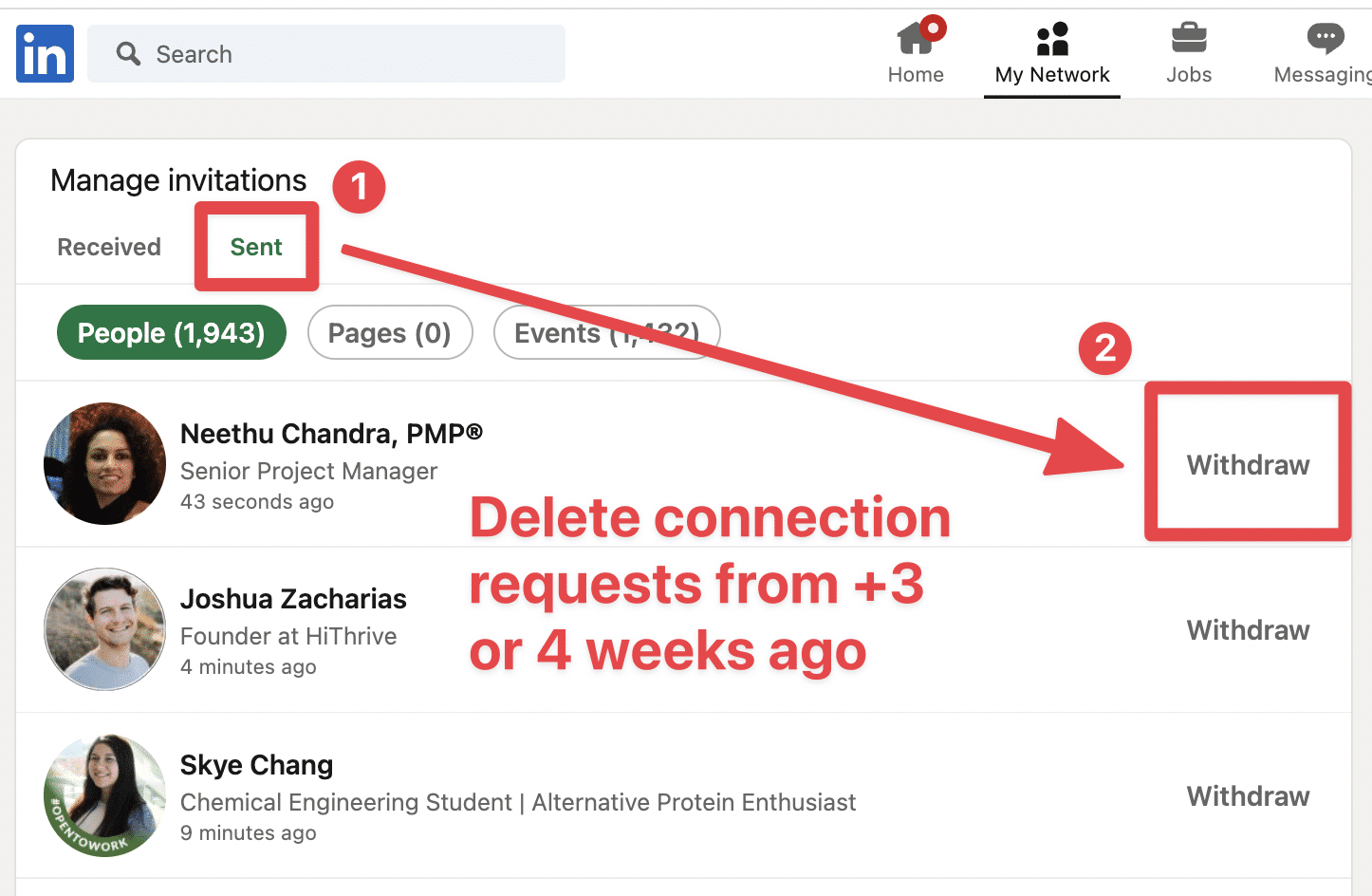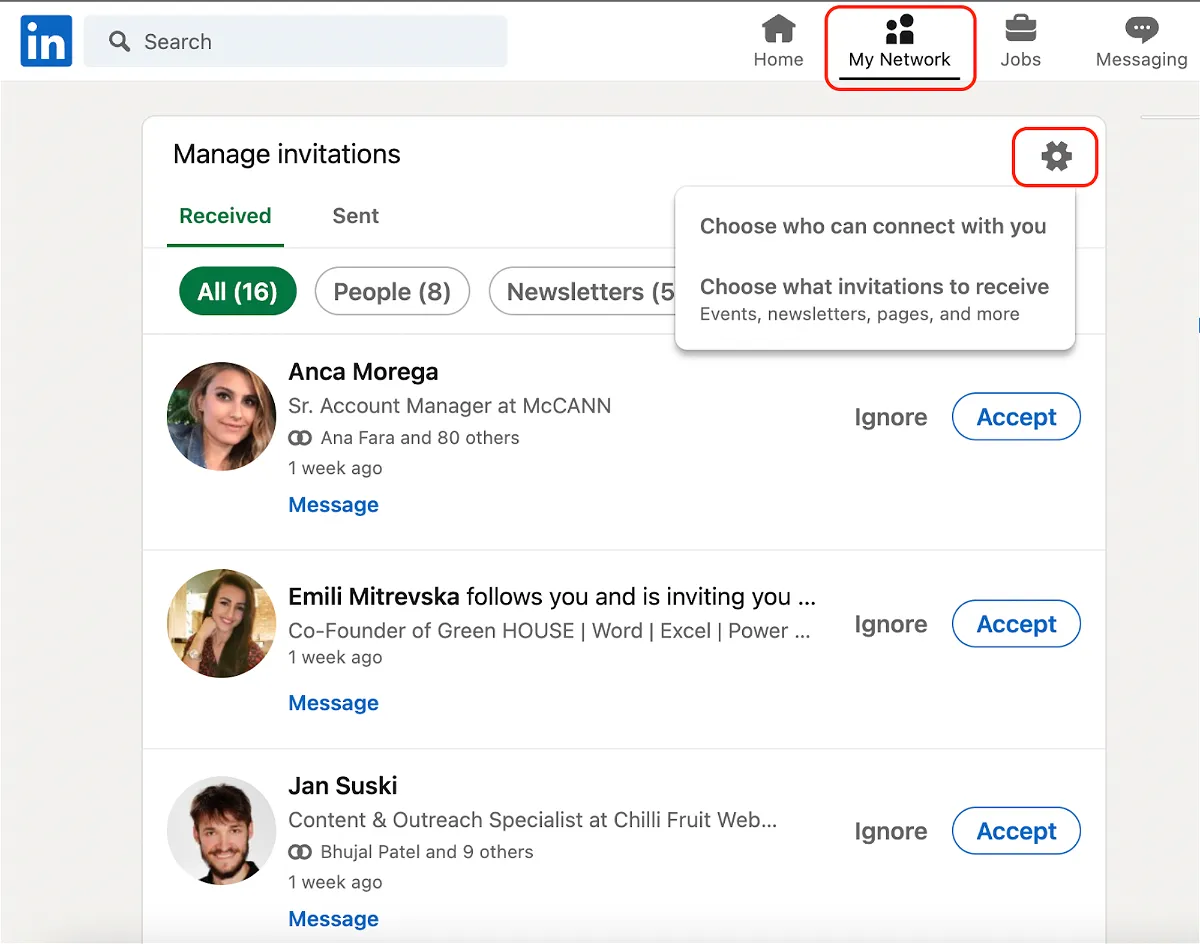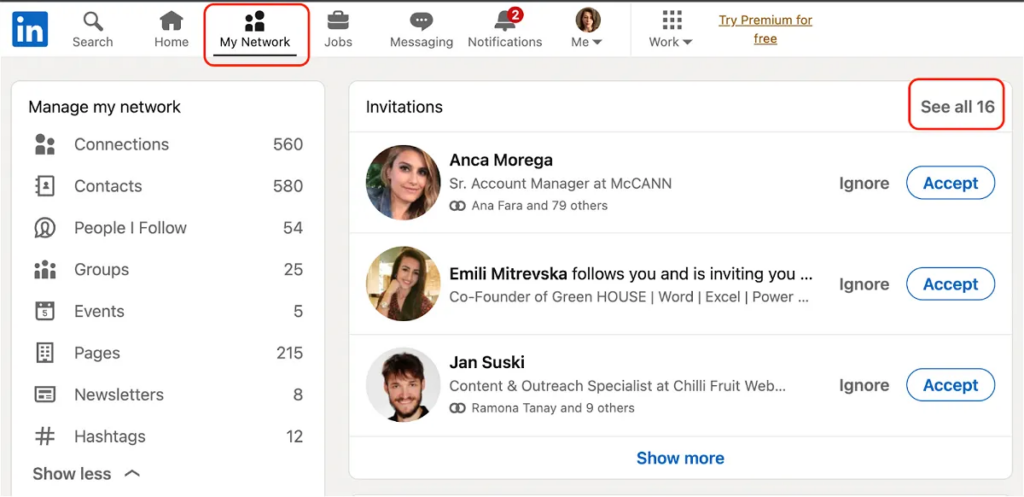Let's face it: networking can feel overwhelming, especially on platforms like LinkedIn. Connection requests are your key to expanding your professional network, but how do they work? In this post, we’ll dive into the ins and outs of LinkedIn connection requests, exploring everything from how to send them to what happens when they sit unattended. So, if you’re ready to boost your
Understanding the Expiration of Connection Invitations

Have you ever sent a connection request and then wondered if it just disappears into the void? The good news is that LinkedIn has a clear policy regarding the expiration of connection requests. Here's what you need to know:
- Duration: Connection requests on LinkedIn expire after 14 days if they haven’t been accepted or declined by the recipient. This means if you send out a request and it’s not acted upon, you’ll need to send a new one after two weeks.
- You'll Be Notified: When a request expires, you won’t receive a direct notification, but you’ll notice that the status changes to “Pending” or “Sent” in your connections area.
- Re-sending Requests: If a request expires, you can easily send a new one. However, it’s wise to reach out with a personalized message to remind the recipient of your previous request—this can help spark their interest!
Why does LinkedIn have this expiration policy? It’s all about maintaining a clear and active network. Expired requests can clutter a user’s connection list, making it harder to manage their professional relationships. So, keeping your requests fresh is not just a matter of etiquette; it’s a best practice!
Another aspect to consider is the impact of pending requests on your connection growth. If you have too many unanswered requests, it may signal to LinkedIn that you’re not actively engaging, which can affect your visibility on the platform. Keeping your invitations tidy helps in maintaining a healthy networking presence.
In summary, managing your connection requests is essential for a successful LinkedIn experience. By understanding the expiration of these requests, you can ensure your networking efforts are both effective and efficient. So, don’t forget to check your pending invitations regularly, and don’t hesitate to send a friendly reminder if your initial request goes unanswered!
Also Read This: How to Update a Promotion on LinkedIn and Showcase Career Growth
3. Factors Influencing the Expiration of Requests

Have you ever wondered what actually determines whether a LinkedIn connection request expires? Well, several factors come into play. Understanding these can not only help you manage your networking better but also assist you in making informed decisions about who to connect with.
- Recipient's Activity Level: If the person you're trying to connect with is inactive on LinkedIn, your request may sit there for a while. LinkedIn tends to prioritize active users, meaning your request could linger indefinitely if the recipient has not logged in for an extended period.
- Connection Limitations: LinkedIn has certain limitations in place. If a user has reached their maximum number of connections, which is currently set at 30,000, your request will remain pending until they either accept or delete some of their existing connections.
- Profile Completeness: A complete and engaging profile can impact how likely someone is to accept your request. If your profile lacks detail or professional appeal, the recipient may hesitate to connect, which could lead to a longer waiting period.
- Mutual Connections: The number of mutual connections you share can also influence the recipient’s decision. If they see several common connections, they might be more inclined to accept your request sooner.
- Personalization of Requests: A personalized connection request increases the chances of acceptance. If you take the time to add a personal note explaining why you want to connect, it stands out more than a generic request.
So, understanding these factors can help you strategize your LinkedIn connection requests better. You may want to focus on engaging with active users and enhancing your profile to make it more appealing.
Also Read This: How to Change LinkedIn Primary Email: A Quick Guide
4. How Long Do LinkedIn Requests Typically Last?

Now that we’ve discussed the factors influencing expiration, let’s dive into how long LinkedIn connection requests actually last. Generally speaking, the timeline is as follows:
- Standard Expiration: Connection requests on LinkedIn typically expire after three weeks. If the recipient hasn’t accepted or declined your request within this time, it will automatically disappear from their notifications.
- Request Management: If you notice that your requests are pending for too long, it might be a good idea to review your pending invitations. You have the option to withdraw a request if you feel it’s going nowhere. This helps keep your connections tidy.
- Re-sending Requests: After a request expires, you can always send another one later. However, be mindful not to spam the recipient. A gap of a few weeks is a good practice before re-approaching.
- Active Users: For users who log in frequently, connection requests can be accepted almost immediately, so the three-week timeline may not impact you as much if you're reaching out to active networkers.
In short, while most requests do expire after three weeks, the actual experience may vary based on user activity and how you manage your connections. Keeping your network active and engaging will always work to your advantage!
Also Read This: How to Add Organizations to Your LinkedIn Profile for Greater Impact
5. What Happens When a Connection Request Expires?
Have you ever sent a LinkedIn connection request and wondered what happens if it just sits there? Well, connection requests on LinkedIn don’t last forever. They have a lifespan! If a request isn't accepted within one year, it automatically expires. So, what does this mean for you?
When your connection request expires, it essentially vanishes from the recipient's queue. They won't receive a notification that your request has expired, and you won't be notified either. It’s like sending a message in a bottle into the ocean—gone without a trace! However, if you decide you still want to connect with that person, you’re free to send them a new request after the expiration.
But wait, there’s more! If your connection request sits in limbo for too long—meaning the recipient has ignored it for a while—LinkedIn may even remove it from their list of pending requests. This cleanup can make their user experience smoother, preventing them from being overwhelmed by requests they’re not interested in.
Here’s a quick recap of what happens when a connection request expires:
- The request disappears from the recipient's pending requests.
- You’re not notified about the expiration.
- You can resend a request after it expires.
- LinkedIn may remove ignored requests to keep things tidy.
So, if you find that your connection requests aren’t being accepted, it might be a sign to reassess your approach. After all, it’s always better to connect with people who are genuinely interested in engaging with you!
6. Best Practices for Managing Connection Requests on LinkedIn
Managing your LinkedIn connection requests can feel overwhelming at times, especially if you’re trying to grow your professional network. But don’t worry! Here are some best practices to help you stay on top of things and make meaningful connections.
1. Personalize Your Connection Requests
Instead of sending a generic request, take a moment to personalize your message. Mention how you found their profile or a common interest. This small gesture increases the chances of them accepting your request. For example:
"Hi [Name], I noticed we both attended [University]. I’d love to connect and share insights from our experiences!"
2. Regularly Review Pending Requests
Make it a habit to check your pending requests. If you've sent out a lot of requests, some may not be accepted. Consider withdrawing requests that have been pending for a long time. This keeps your network fresh and helps you focus on connections that matter.
3. Accept Requests Wisely
When you receive a connection request, evaluate the profile before accepting. Look for mutual connections, shared interests, or professional relevance. If someone seems spammy or irrelevant, it’s okay to decline. You want to build a network that will support your career goals!
4. Follow Up
If someone accepts your request, don’t just leave it at that! Send a friendly message thanking them for connecting. This opens the door for future conversations and strengthens your relationship. Something simple like:
"Thanks for connecting, [Name]! I’m looking forward to learning from each other."
5. Stay Active and Engage
Lastly, keep your profile updated and be active on LinkedIn. Share posts, comment on others’ content, and join relevant groups. This not only attracts more connection requests but also keeps your current network engaged!
By following these best practices, you’ll not only manage your connection requests effectively but also build a vibrant and supportive professional network. Remember, LinkedIn is all about making connections that matter!
 admin
admin








